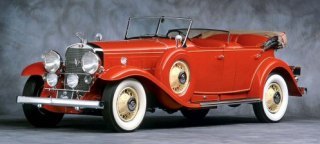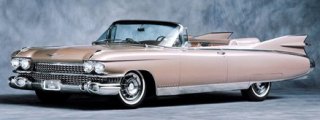
| GM Korea (South Korea) |
| Holden (Australia) |
| Shanghai GM (China) - 49% |
| SAIC-GM Wuling (China) - 44% |
Various plants in the US, Canada, Mexico and overseas.

2017: 9,600 million units (loss of Opel/Vauxhall from Aug 1st)
2016: 10,008 million units
2015: 9.958 million units
2014: 9.925 million units
2013: 9.722 million units
2012: 9.29 million units (11.5% global market share)
2011: 9.03 million units (11.9% global market share)
2010: 8.39 million units
2009: 7.48 million units
2008: 8.35 million units
2007: 9.37 million units (13.3% global market share)
2006: 9.09 million units
2005: 9.17 million units
2004: 8.99 million units
2003: 8.62 million units
2002: 8.48 million units
2017 global sales by brand:
Chevrolet: 4,140,585 units
Buick: 1,424,281 units
GMC: 687,025 units
Cadillac: 356,364 units
Holden: 104,768 units
Wuling: 1,141,451 units
Baojun: 996,629 units
2017 US sales by brand:
Chevrolet: 2,065,883 units
GMC: 560,687 units
Buick: 219,231 units
Cadillac: 156,440 units
2017 US sales by model (selected):
Chevrolet Spark: 22,589 units
Chevrolet Sonic: 30,290 units
Chevrolet Bolt: 23,297 units
Chevrolet Cruze: 184,751 units
Chevrolet Volt: 20,349 units
Chevrolet Malibu: 185,857 units
Chevrolet Impala: 75,877 units
Chevrolet SS: 4,055 units
Chevrolet Camaro: 67,940 units
Chevrolet Corvette: 25,079 units
Chevrolet Trax: 79,289 units
Chevrolet Equinox: 290,458 units
Chevrolet Traverse: 123,506 units
Chevrolet Tahoe: 98,961 units
Chevrolet Suburban: 56,516 units
Chevrolet Colorado: 112,996 units
Chevrolet Silverado: 585,864 units
Cadillac ATS: 13,100 units
Cadillac CTS: 10,344 units
Cadillac XTS: 16,275 units
Cadillac CT6: 10,542 units
Cadillac SRX / XT5: 68,468 units
Cadillac Escalade: 37,694 units
Buick Verano: 4,277 units
Buick Cascada: 5,595 units
Buick Regal: 11,559 units
Buick LaCrosse: 20,161 units
Buick Encore: 88,035 units
Buick Envision: 41,040 units
Buick Enclave: 48,564 units
GM was a complex enterprise consisting of many divisions. At home market it sold cars under 7 core brands (Chevrolet, Buick, Pontiac, Cadillac, Saturn, GMC and Hummer), each with a specific market positioning. Chevrolet is its bread-and-butter brand. Pontiac biases towards sporty flavours. Buick sells near-luxury cars while Cadillac is geniunely luxury. Saturn is supposed to be Japanese cars fighter. GMC and Hummer produce trucks only. To sustain various brands, GM invented badge engineering and platform sharing. However, as the competition gets intense and its market share decreases, it could no longer afford so many brands. Oldsmobile was killed off in 2004, then Pontiac, Saturn and Hummer faced the same fate when GM went bankrupted in 2009.
As an international enterprise GM also has many overseas subsidiaries. They include Opel / Vauxhall in Europe, Holden in Australia, GM Korea in South Korea and Shanghai GM in China. Like the rest of the industry, its Asian subsidiaries are far more successful than Western arms in recent years. In 2010, GM sold more cars in China than at its home market.
GM continued expanding by acquiring Oakland Motor (renamed to Pontiac) and famous luxury car maker Cadillac in 1909, and at last Chevrolet in 1916. By 1920, GM had grown 8 times compare with four years ago. It also expanded its business in overseas by purchasing Opel (Germany) in 1921 and Vauxhall (UK) in 1925. Despite that, Durant lost his post during the post-WWI recession.
The famous GM building was completed in Detroit in 1920 as a symbol of American industry. Since then the research and development of cars were centralised, with a budget and facilities that made the rest of the world jealous. GM became a world leader for mass production technology, such as the first mass production six-cylinder engine, high-compression V8, automatic transmission, air conditioning, electric windows, safety glass, fast-drying paint etc. By 1927, GM overtook Ford to be the world’s largest car maker, thanks to its variety of model ranges, in contrast to the one-car policy of Ford. Ford's Model A helped regain the title briefly in 1929 and 1930. After that GM rose to the top spot again and never looked back in the following 77 years.
 1930 Cadillac V16
1930 Cadillac V16Since the 1920s, GM adopted a clear pricing policy - each division and each model was assigned with a price range and target customers to avoid internal competition. On the other hand, GM started a so-called "revolution" in car styling. It employed the industry’s first stylist, Harley Earl, to help diversifying the image of its wide range of models. He shaped cars according to taste and fashion instead of functions, created the idea of "model year" by facelifting cars every year. Like fashion industry, this strategy stimulated customer's desire to change the cars frequently, hence increased sales. The situation went so extreme that the GM cars in the 1950s employed ultra-long trunk and tailfins inspired by aircraft fighters. The American people were wealthy in those "good old days", so they could afford the excess. This pushed the fortune of General Motors to its peak.
 1959 Cadillac
1959 CadillacFrom 1960s, GM started a trend of "muscle cars" with Pontiac GTO. That pushed the American market to another extreme - everyone pursued for big-block V8s with up to 7 litres capacity and 400 horsepower. In response to Ford’s popular pony car, Mustang, Chevy Camaro and Ponitac Firebird were created with nearly equal success. All American car makers offered fire-breathing performance at low prices with big V8 produced in mass amount. The cars grew too big ("size does matter", as they said) and thirsty to be exported. Handling were ruined by the size and weight as well as the lack of concern in suspension and chassis design. The whole American motor industry was set on fire and looked crazy in the eyes of European.
 1967 Corvette 427
1967 Corvette 427The first energy crisis in 1967 punished GM (as well as Ford and Chrysler) heavily. But it did not learn from the lesson as the crisis passed away quickly. However, the second oil crisis in ‘73 and then the third occasion in ’78 were not so kind, accompanied with stricter emission and safety regulations. The Big 3 found their ignorance about small economy cars paid the price. Sales of Japanese imports surged. Chevrolet made its first so-called "compact car", Corvair, but not too "compact" by our standards. GM ran into loss times to times during the 70s and 80s. In 1989, it recorded the biggest loss ever experienced by the world’s industry. Substantial cost-cutting measures afterwards helped it to regain profitability, but its domestic market share never rose back.
 1990 Saturn
1990 SaturnSince the Mustang era, GM has been known as a conservative and slow-reacting giant. It talked too much about reform but did too little, with the exception of Saturn. Saturn was a clean-sheet new division. It followed Japanese-style production and development process and set up a factory in Tennessee in 1990. However, lack of long-term investment resulted in limited success. The domestic market share of GM continued to decline and led to the demise of Oldsmobile in 2004.
 1995 Oldsmobile Aurora
1995 Oldsmobile AuroraIn the 1990s and early 2000s, GM made some big scale acquisitions. It bought Saab in 1990 and Daewoo in 2003. It took minority stakes in Subaru and Suzuki (both were sold off later to raise money). It merged with FIAT group in 2000 but the marriage lasted for only 5 years. However, the Daewoo purchase and the joint-venture with SAIC in China were very successful, offsetting part of the loss made in its home soil.
From the mid-2000s, GM's cars were much improved and rationalized thanks to the direction of product boss Bob Lutz. Unfortunately, the US credit crunch and resulting economic recession in late 2007 hit GM hard. It went into bankruptcy in 2009 and got rescued by the US government. Emerged from bankruptcy protection, the "new GM" got rid of most debts, excess capacity and some of its declinding brands - Pontiac, Saturn and Hummer were killed off, while Saab was sold to Spyker. It also significantly reduced its labour costs by getting concessions from workers union. As a redsult, the company became much more competitive.
In 2017, GM sold its loss-making European flagship, Opel/Vauxhall, to PSA group, effectively withdrawing from the European market.